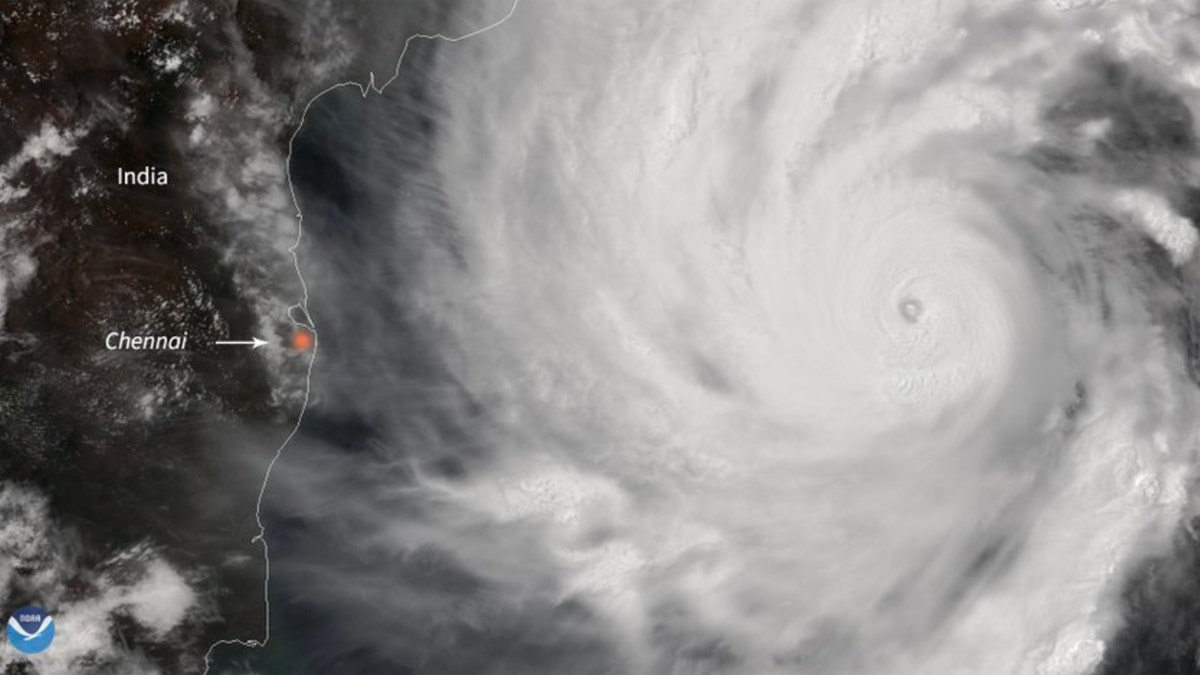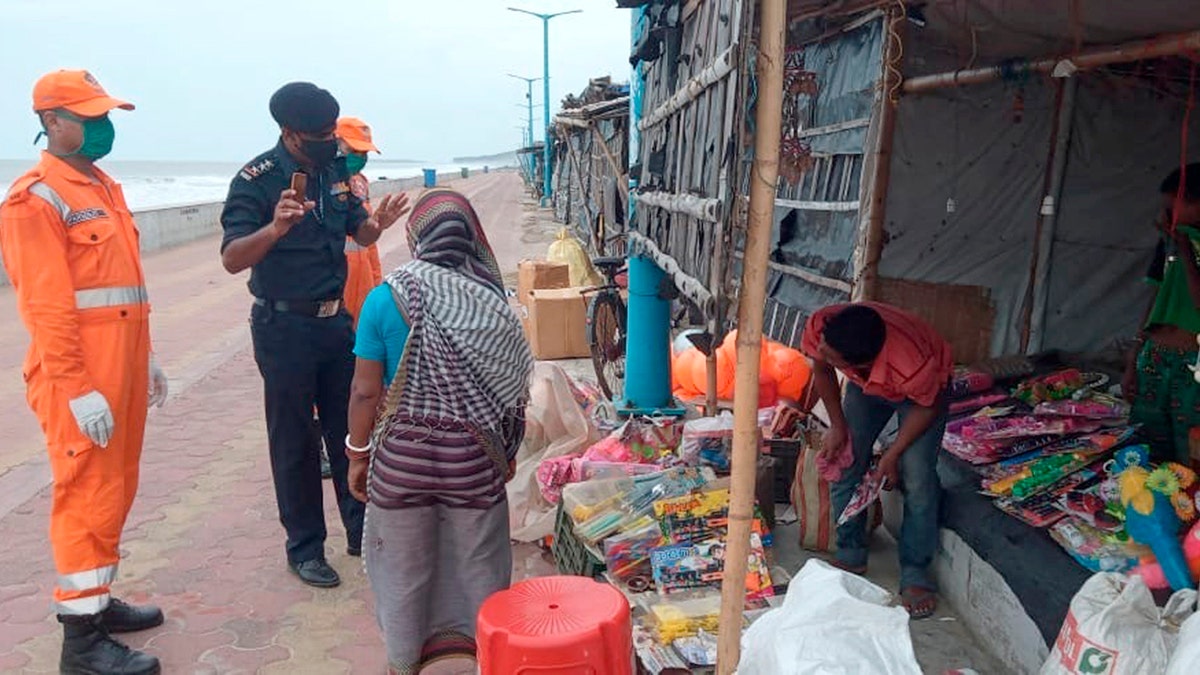National forecast for Tuesday, May 19
Fox News senior meteorologist Janice Dean has your FoxCast.
Get all the latest news on coronavirus and more delivered daily to your inbox. Sign up here.
Millions of people have been ordered to evacuate from coastal areas of India and Bangladesh ahead of a super cyclone that's already tied a record for the strongest storm in the region.
Super Cyclone Amphan is forecast to make landfall Wednesday morning near the border of the two countries. Forecasters warn of extensive damage from high winds, heavy rainfall, tidal waves, and some flooding in crowded cities like Kolkata.
“This type of cyclone can be disastrous ... It is completely unsafe,” India’s meteorological chief Mrutyunjay Mohapatra said Tuesday.
TYPHOON VONGFONG LEAVES DEADLY TRAIL IN PHILIPPINES, EXTENSIVE DAMAGE TO TOWNS
Amphan had sustained winds around 126 mph on Tuesday, the equivalent of a Category 3 hurricane in the Atlantic, according to the Joint Typhoon Warning Center. The storm is forecast to weaken before landfall around India’s West Bengal state and Bangladesh.

This May 17 satellite image released by NASA shows Cyclone Amphan over the Bay of Bengal in India. (NASA Worldview, Earth Observing System Data and Information System (EOSDIS) via AP)
The storm rapidly intensified from 75 mph to 160 mph in just 24 hours from Sunday to Monday, strengthening from a Category 1 to a Category 5 equivalent storm on the Saffir-Simpson Hurricane Wind Scale. The storm's winds then increased to 165 mph.
Colorado State University research scientist Phil Klotzbach said on Twitter that Amphan's powerful winds tied it with Gonu in 2007 for the strongest tropical cyclone on record in the North Indian Ocean since 1972.
It is the second super cyclone on record that has formed over the Bay of Bengal, Mohapatra told the Associated Press. The first of that classification was the devastating 1999 cyclone in Odisha state that left nearly 10,000 dead.
Amphan's winds are whirling 435 miles from its eye as it approaches land.

Tropical Cyclone Amphan rapidly intensified from 75 mph to 160 mph in just 24 hours from Sunday to Monday, strengthening from a Category 1 to a Category 5 equivalent storm in a day. (NOAA)
The storm is forecast to pass between the seaside resort town of Digha in India’s West Bengal state and Hatiya Island in Bangladesh with a weaker wind speed of between 102 and 108 mph.
Forecasters have warned that Amphan could bring 10 to 16 feet of storm surge. India's Meteorological Department (IMD) has issued a red alert for heavy rain and strong winds in West Bengal.

Tropical Cyclone Amphan is seen off India on Monday. (NOAA)
The eye of the storm is likely to pass through the Sunderban mangrove forests, one of the largest single tracts of mangrove forests in the world. The forests are likely to absorb some impact of the cyclone, officials said.
CLIMATE CHANGE IS INFLUENCING WHERE TROPICAL CYCLONES HAPPEN MOST FREQUENTLY, STUDY SAYS
Officials in India said they are moving families to more than 1,000 shelters in government offices and educational centers, in addition to hastily converting coronavirus quarantine centers into cyclone shelters.

This photograph provided by India's National Disaster Response Force (NDRF) force shows NDRF personal making announcements to warn people on the Bay of Bengal coast about Cyclone Amphan at Namkhana, South 24 Parganas, West Bengal, India. (National Disaster Response Force via AP)
"We have just about six hours left to evacuate people from their homes and we also have to maintain social distancing norms...the cyclone could wash away thousands of huts and standing crop,” S.G. Rai, an official in federal disaster management office told Reuters on Tuesday.
Videos and photos from India and Bangladesh showed families near the coast or in other flood-prone areas being evacuated to cyclone shelters.

This photograph provided by India's National Disaster Response Force (NDRF) force shows NDRF personal warning people on the Bay of Bengal coast about Cyclone Amphan at Namkhana, South 24 Parganas, West Bengal, India, Tuesday, May 19, 2020. (National Disaster Response Force via AP)
Some carried bags with their belongings and all had their faces covered to protect against the virus. Officials went from village to village with loudspeakers warning people of the storm.
CLICK HERE FOR MORE WEATHER COVERAGE FROM FOX NEWS
The Meteorological Department in Bangladesh said the cyclone could flood vast spans in southwestern and southern Bangladesh from tidal waves 4 to 5 feet higher than normal, along with heavy rainfall and high wind.
Bangladesh's disaster management minister told the BBC that it plans to evacuate about 2 million people. Officials there told the BBC that extra shelters have been prepared to allow for social distancing and that masks are also being distributed in light of coronavirus concerns.
Junior Minister for Disaster Management and Relief Enamur Rahman told the Associated Press that more than 50,000 people in Bangladesh had already been evacuated in Satkhira district, which was devastated by a 2009 cyclone.
Rahman said he ordered local authorities to prepare thousands of shelters to protect up to 2.2 million people.
Authorities suspended all river transport, including ferry service, across the delta nation, crisscrossed by more than 130 rivers.
CLICK HERE FOR THE FOX NEWS APP
After reaching land, the cyclone is expected to move away fast and weaken by Thursday.
The Associated Press contributed to this report.

